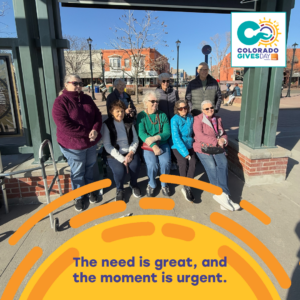On Sunday, the Regional Transportation District will implement a significant cutback in scheduled service. We’re reducing service levels by 40%, shifting to Saturday bus and Sunday rail schedules. Where possible, we will redeploy buses and operators freed up by this change to continue and increase the provision of additional, or “shadow” buses on our most used routes. That way, passengers can more easily spread out and maintain social distancing. Read more
Most of the goals that we expect public transit to pursue have just turned upside down. Ridership was an important goal two months ago, but now public transit agencies are telling customers to stay away if they can, restricting service to “essential trips.” These trips are critical, though, to the functioning of society. You could even argue, as I did in Citylab recently, that transit is helping prevent the collapse of civilization. Read more
As COVID-19 continues to impact communities around the world, people are coming together to help one another now more than ever. Google has been using their Doodle to thank front line workers from various industries during this crisis. Today Doodle will thank public transportation workers. Check out the link
4/13/2020 Boulder LCC
- Location: Microsoft Teams Meeting (virtual)
- Introductions – 37 in attendance
- With intros we also spoke about how each of organizations have been affected by COVID-19 and what we’ve been doing to meet needs in our communities
- Meet every month 2:00pm-4:00pm
- Even months – Longmont
- Odd months – Boulder
- Mission – Overcome transportation gaps in the community
- Multi-modal education
- Homeless Solutions for Boulder County – Heidi
- They have set up a COVID-19 Recovery Center (CRC)
- Have devoted the Rec Center to this purpose
- Giving transportation to and from the CRC to the clinics for testing
- They have set up a COVID-19 Recovery Center (CRC)
- RTD – Chris Quinn
- Service changes will go into effect this Sunday (4/19)
- You can find more information on the RTD website
- Access a Ride is doing grocery deliveries
- Have had 60 grocery trips so far in April
- Access a Ride has presumptive eligibility until assessments with Easter Seals can start up again
- Service changes will go into effect this Sunday (4/19)
- Cultivate – Kristi
- Doubling enrollment each week!!
- Still haven’t hit a point where they must reject enrollments
- Carry-out Caravan – doing grocery trips
- Expanding to Broomfield site
- They have partnered with organizations who have devoted property to set up a decontamination site
- All food is wiped down and put into new decontaminated bags
- For now, they are not bringing the groceries in and helping to put them away
- Doubling enrollment each week!!
- Via – Lisa
- Paratransit is still available, but mostly they are doing grocery delivery
- They are also partnering with Children’s Hospital in Broomfield
- When children need to be transported to Denver hospitals the parents are not allowed to accompany the kids right now
- Via is helping to transport the parents to the Denver hospitals
- 1 person per vehicle right now
- Hosting online community events
- Mobility 4 All – Angel
- Have postponed all workshops
- Rescheduling for the fall
- Thinking about trying peer to peer Zoom or Google Hangout meetings
- LiVE program
- Planned to train other agencies in how to help a rider go through the sign-up process
- This is also postponed until in-person training can be done
- Planned to train other agencies in how to help a rider go through the sign-up process
- RFP for program to get a Longmont FlexRide-like program
- Aiming for July 1st
- This project IS still moving forward
- COVID-19 resources can be found on the Boulder City page
- Have postponed all workshops
- Census – Craig
- This census has a huge value for the next 10 years
- There are tutorial videos on how to take the online census (includes instructions for the blind and using screen readers)
- 2020census.gov
- Or take over the phone: 1-844-330-2020
- American Cancer Society – Jenn
- Services ARE paused, but they are continuing to provide resources
- Information for cancer patients on what to know about COVID-19 can be found on their website: cancer.org
-
- NEXT MEETING
- Monday 5/11/2020
- Location: possibly still virtual?
- Time: 2:00pm-4:00pm
The Regional Transportation District will begin hosting a series of telephone town halls this month and next to help keep the community informed about coronavirus-related changes within the agency. Read more
![DRMAClogo[1] DRMAC](https://drmac-co.org/wp-content/uploads/2019/12/DRMAC20logo1.jpg)







